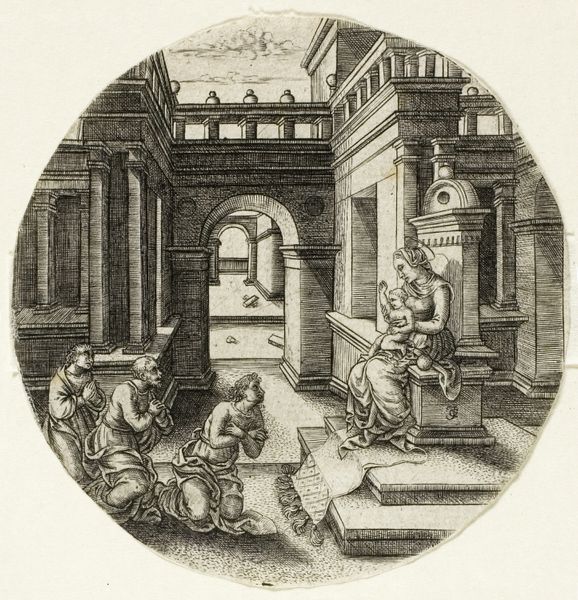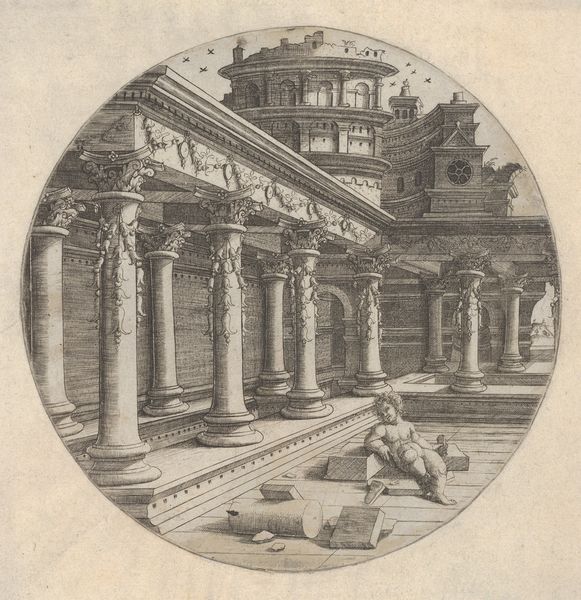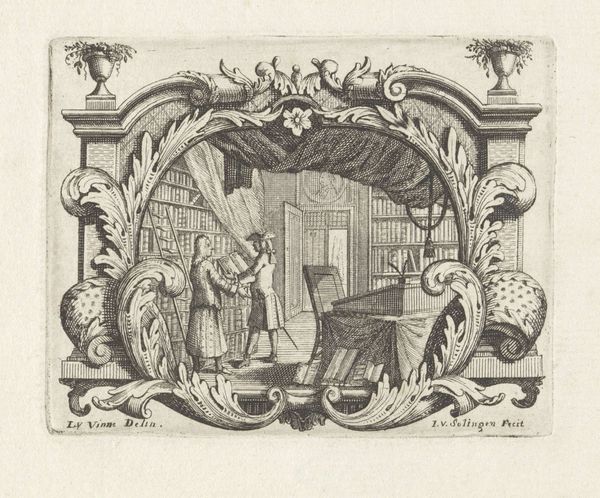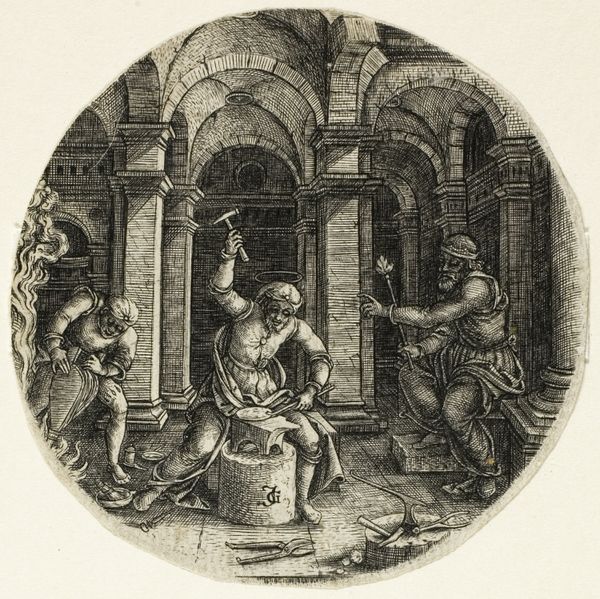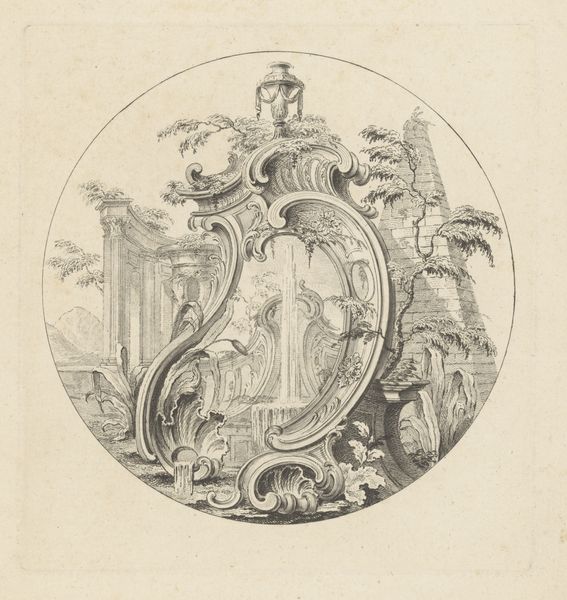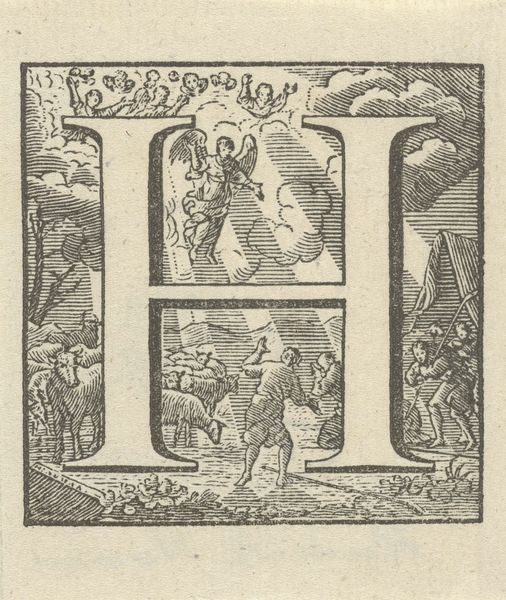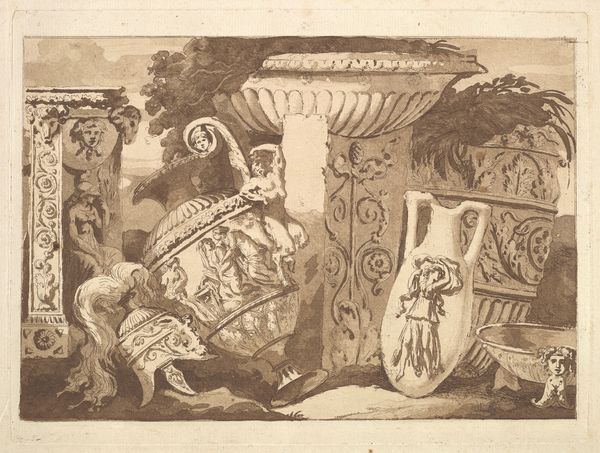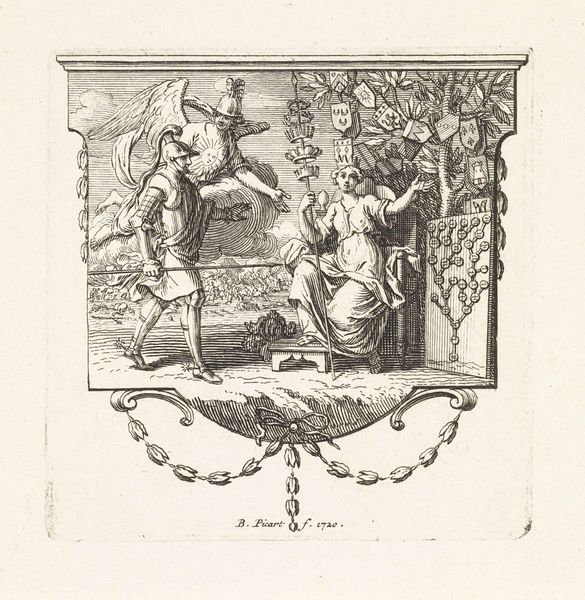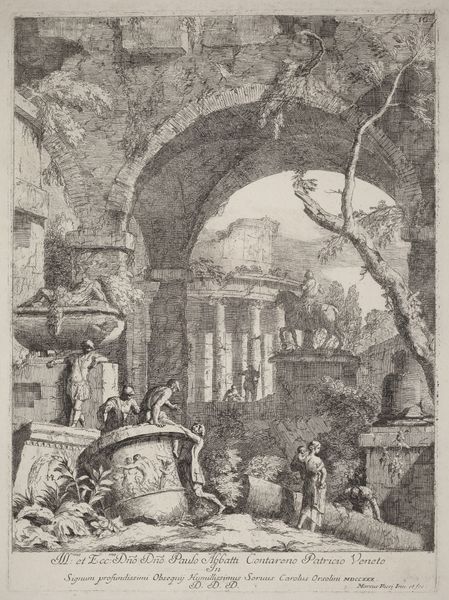
drawing, print, paper, engraving
#
drawing
# print
#
old engraving style
#
figuration
#
paper
#
france
#
genre-painting
#
history-painting
#
italian-renaissance
#
nude
#
engraving
Dimensions: 78 × 78 mm (sheet, trimmed within platemark)
Copyright: Public Domain
Editor: This engraving, *Nude Child Seated* by Jean de Gourmont, made sometime between 1520 and 1530, depicts a, well, nude child, but it is more about the ruined architecture in the background. The architectural elements dominate the scene. What statements about Renaissance society do you see this work making? Curator: It's fascinating how de Gourmont uses this imagery. Consider the revival of classical ideals during the Italian Renaissance and its effect on the function of imagery. The ruins could be read as a commentary on the transience of power and empire, themes very resonant in the turbulent politics of the time. The child could be interpreted as an allegory. Does it evoke to you, for example, ideas of innocence or the dawn of a new age? Editor: I see your point about the ruins and the fleeting nature of empires, but what about the prominence given to a nude child in the composition? Does that detail suggest a social commentary as well? Curator: Absolutely. The nude form, of course, owes itself to the classical tradition. But here, positioned among the ruins, it begs questions about the gaze itself. Is this a celebration of human form, a symbolic gesture towards the future, or something else entirely? Also, engravings like these circulated widely, influencing tastes and ideas, helping spread Renaissance ideals to a broader audience. Editor: So, the artist is not just creating art but participating in the dissemination of cultural values and possibly even in subtle political debates? Curator: Precisely. De Gourmont’s engraving serves as a window into the intellectual and social currents of its time, using historical reference to provoke engagement and thought about the direction of society. Editor: That connection to larger societal concerns and values is fascinating. Thank you. I will definitely look at these prints differently. Curator: My pleasure. It's by understanding these dialogues that we appreciate the enduring power of art to reflect, challenge, and shape our world.
Comments
No comments
Be the first to comment and join the conversation on the ultimate creative platform.

